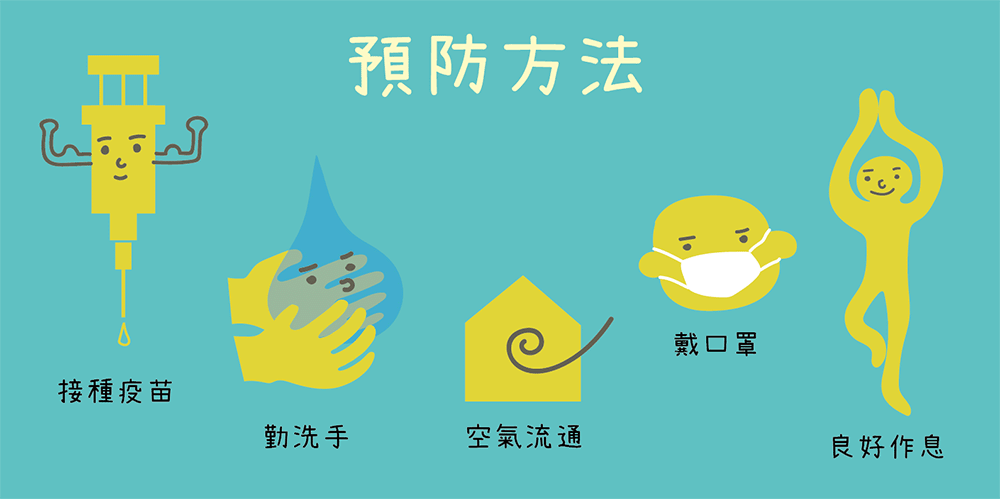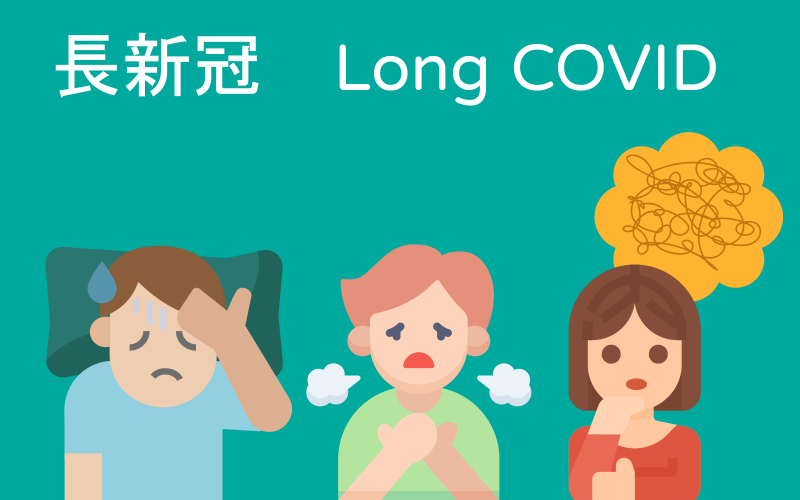
In the year 2022, amidst the rampant COVID-19 pandemic, the dangers posed by influenza cannot be underestimated. According to the latest data from the Centers for Disease Control and Prevention, the outpatient rate for influenza-like illnesses has been steadily increasing since September, with a higher likelihood of cluster infections occurring in medical facilities, schools, and workplaces.
It is especially important to remind everyone that the best way to prevent influenza is to get vaccinated. This is particularly crucial for high-risk groups such as the elderly and infants, as receiving the vaccine can significantly reduce the occurrence of severe cases and complications. Generally, the effectiveness of the influenza vaccine gradually declines after six months, which is why it is recommended to receive the vaccine annually.
What is influenza?
Influenza is an acute respiratory infection caused by the influenza virus. It is characterized by symptoms such as headache, fever, runny nose, sore throat, cough, muscle aches, and fatigue. It commonly occurs during the fall and winter seasons and is known to cause seasonal outbreaks.
The difference between influenza and the common cold
| Influenza | Common cold | |
| Pathogen | Influenza virus | Adenovirus, rhinovirus, respiratory syncytial virus (RSV), etc. |
| Symptoms | Sore throat, muscle aches, fatigue | Sore throat, sneezing, nasal congestion |
| Fever | Sudden high fever, lasting for 3-4 days | Mild increase in body temperature, less fever, usually lasting 1-3 days. |
| Course of illness | Lasting approximately 1-2 weeks. | Lasting approximately 2-5 days. |
| Infectiousness | Highly contagious, with the potential for large-scale transmission due to variations. | Less contagious in nature. |
| Peak season | More common in autumn and winter seasons. | Common in spring, autumn, and winter seasons. |
| Vaccine | Yes | No |
The characteristics of influenza include rapid outbreaks, wide transmission range, and severe complications. Not all severe colds are necessarily influenza, and it is necessary to use rapid tests to determine if the infection is caused by the influenza virus.
Information on free influenza vaccine administration in 2022
Starting from October 1, 2022, the free influenza vaccine will be available for the following eligible groups:
- Healthcare personnel and those involved in health and epidemic prevention.
- Individuals aged 65 and above.
- Residents and staff of long-term care facilities, nursing homes, and institutions providing care services.
- Children aged 6 months and above to pre-school age (before entering elementary school).
- Pregnant women.
- Individuals with underlying medical conditions, including those with high-risk chronic diseases, BMI≥30, rare disease patients, and those with major illnesses or injuries.
- Parents of infants aged 6 months or younger.
- Kindergarten and childcare providers, as well as professionals in childcare institutions.
- Students in grades 1-3 of elementary school, junior high school, senior high school, vocational school, and five-year junior colleges.
- Individuals involved in poultry and livestock industries and those working in animal epidemic prevention.
The free influenza vaccine is available for the following eligible group starting from November 1, 2022:
- Adults aged 50-64 without high-risk chronic diseases.
What are the differences between Influenza Type A and Type B?
There are two common types of influenza: Type A and Type B. However, they have some differences in their mutation capabilities and impact. Let’s briefly introduce them to you.
| Type A | Type B | |
| Antigenic variability | High variability, which may lead to significant mutations and the emergence of new viral strains, increasing the risk of global pandemics. | The antigenic variability is relatively stable, primarily resulting in regional outbreaks. |
| Natural host | Humans, pigs, poultry, and other mammals. | Humans |
| Disease severity | It causes the most severe symptoms and stronger discomfort. | The proportion of diarrhea and muscle aches is higher. |
Do you know what H1N1, H5N1, and H3N2 commonly referred to mean?
Actually, these are different subtypes of influenza A viruses.
Influenza A viruses can be classified based on the specific surface proteins known as H antigens (hemagglutinin) and N antigens (neuraminidase). There are 16 subtypes of H antigens and 9 subtypes of N antigens.
Influenza A viruses can have different combinations of these two antigen proteins. For example, the H1N1 virus consists of the H-1 protein and the N-1 protein, H5N1 consists of the H-5 protein and the N-1 protein, and H3N2 consists of the H-3 protein and the N-2 protein.
Different combinations can result in the emergence of new viruses, leading to variations in their transmissibility and severity. For example, H5N1, commonly known as avian influenza, is currently transmitted from birds to humans with no significant human-to-human transmission reported. Infection with H5N1 can cause symptoms such as fever and respiratory distress. On the other hand, H6N1, when infecting humans, typically causes mild symptoms or may even be asymptomatic.
Due to the high variability of influenza A viruses, they can rapidly spread and cause widespread outbreaks. In contrast, influenza B viruses do not have subtypes, and their antigens are relatively stable, resulting in less variability and smaller-scale outbreaks.
Beware of complications from influenza!
One of the frightening aspects of influenza is the occurrence of severe complications, especially among infants, elderly individuals aged 65 and above, those with underlying conditions such as heart, liver, or lung diseases, chronic metabolic disorders (e.g., diabetes), kidney failure, pregnant women, obese individuals, and hospitalized patients, as they are considered high-risk groups.
If you experience any of the following warning signs, seek medical attention promptly to reduce the risk of complications:
- Difficulty breathing
- Rapid breathing
- Chest pain
- Coughing up blood or thick mucus
- Altered consciousness
- High fever persisting for 72 hours
Common complications of influenza include pneumonia, encephalitis, otitis media, sinusitis, pericarditis, and others.
How does influenza spread?
Influenza primarily spreads through respiratory droplets when an infected person coughs, sneezes, or talks, releasing the virus into the surrounding air. If someone touches a surface contaminated with the virus and then touches their face, particularly their eyes, nose, or mouth, they are at risk of infection.

The incubation period of influenza is typically 1-4 days, which means that symptoms may appear within 1-4 days after being infected. Additionally, the contagious period of influenza should not be underestimated. It extends from one day before symptoms develop to 3-7 days after symptoms appear, during which time the virus can be transmitted to others.

Prevention is important when it comes to influenza, and here are the 5 key points:
- Get vaccinated: Getting vaccinated with the flu vaccine is the most effective way to prevent influenza, especially for high-risk groups such as older adults, young children, and individuals with chronic illnesses.
- Practice good hand hygiene: Regularly washing your hands with soap and water for at least 20 seconds helps reduce the chances of virus transmission. Avoid touching your eyes, nose, and mouth with unwashed hands to minimize the risk of infection.
- Wear a mask: When using public transportation or visiting crowded places, wearing a mask can help reduce the chances of droplet transmission.
- Maintain a healthy lifestyle: Getting enough sleep, exercising regularly, and having a balanced diet contribute to a strong immune system, which helps in defending against infections.
- Ensure good ventilation: Adequate airflow and ventilation in indoor spaces can help reduce the chances of viral spread. Opening windows or using air purifiers can be helpful in increasing air circulation.
By following these preventive measures, you can significantly reduce the risk of contracting and spreading influenza.

If unfortunately infected with influenza, here’s how it can be treated:
Antiviral medication: While most healthy adults can recover from influenza without specific treatment, certain vulnerable populations may be at risk of developing complications. If you experience symptoms such as fever, it’s important to seek medical attention promptly. A healthcare professional will assess whether antiviral medication is necessary. In Taiwan, the commonly used antiviral medications for influenza are Oseltamivir (Tamiflu) and Peramivir (Rapivab). These medications are most effective when taken within 48 hours of symptom onset. It’s important to note that these medications should be prescribed and instructed by a doctor and should not be obtained and taken without medical supervision to avoid the development of drug resistance.
Stay hydrated: Drinking plenty of warm fluids can help relieve symptoms. Adequate hydration also aids in temperature regulation, particularly if you have a fever.
Get plenty of rest: Resting allows your body to heal and recover. Insufficient rest can worsen symptoms or lead to complications. If you’re feeling unwell, it’s important to stay at home and rest. This not only provides the necessary recovery time for your body but also helps reduce the risk of spreading the infection to others.
While these measures can help alleviate symptoms and support recovery, it’s crucial to consult a healthcare professional for an accurate diagnosis and appropriate treatment guidance tailored to your specific condition.
School Influenza Class Suspension Guidelines
Schools have guidelines for class suspensions during influenza outbreaks. For junior high schools and below, kindergartens, and cram schools, if two or more students in the same class are clinically diagnosed by a physician as having influenza within a 3-day period, it is recommended to suspend the class for 5 days, including weekends and holidays. The affected students should only return to school after 24 hours of symptom resolution. These measures help prevent the further spread of influenza within the school setting.
文:林恆毅/圖:Daco




